Lighting the Planet
Now that we have our planet, clouds, and atmosphere, there’s only one thing missing: THE most important part of any habitable planet – THE SUN! Every Earth-like planet orbits a sun-like star, and that gives them one very important thing in common: every habitable planet has a day side and a night side, half and half, no exceptions. Here’s why:
Check out my Sun Tutorial
A Few Observations about the Habitable Zone
This isn’t a science article, but let’s talk a minute about the “habitable zone” – the distance from the sun where water can be liquid. Too close and surface water boils off; too far and all the water is locked in ice. For every star the size of the zone will be different depending on its size and temperature of the star, but as far as solar systems go the HZ is relatively near to the star in the “inner” solar system.
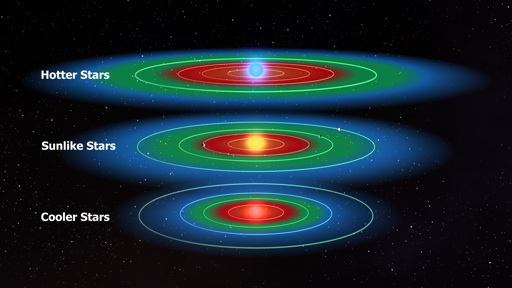
Our “yellow dwarf” sun is about mid-range, average in the galaxy. Almost 99% of stars are “dwarfs” a little bigger or smaller than our sun – although most of the stars we recognize in the night sky are the unstable “giants”, visible because they are blazing through their fuel.
Researchers estimate about 22% of dwarf stars will have a planet within the habitable zone. There is a good chance of finding terranovas scattered around the galactic disc 12-15 light years apart. The habitable zone is always going to be in the “inner” solar system. All of these planets will be bathed in the light of their star from one-side only.
Couldn’t the nightside be lit by a nearby star, glowing nebula, or quasar? Well, no for various reasons. Nebula are hot gas where stars are born, that’s not a habitable zone…. Quasars sit at the edge of enormous black holes at the center of galaxies, and in addition to visible light they also emit lethal gamma and x-rays. It’s presumed habitable planets will not occur so close to the galactic center…. As for a neighbor star, from the distance of Pluto our sun looks like a very bright star in the night sky. Even a giant star would be no more than a tiny spec in the night sky seen from another solar system….
What about binary stars, can they have planets? Yes, but in binary star systems the two stars orbit each other. Any planets will orbit the stars combined center of gravity (called the barycenter). A planet would never pass between the two suns, it would be destroyed or hurled out of orbit. From the planet, the two suns would rise and set together, The planet still has distinct day and night sides.
#7 – Direction Light makes the best Sunlight
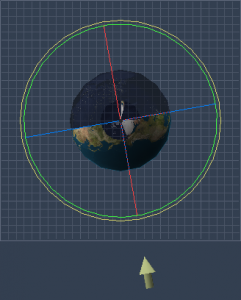
Distant Light hotpoint aligned with the planet
From my experiments there is no advantage to using Soft Shadows, it just hides bump detail in your cloud layer. A Point Light (Bulb) might seem logical at first, but the sun would be so much larger than the planet the parallel aspect of a Distant Light is more accurate.
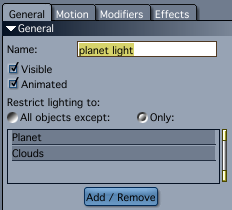
Distant Light restricted to the planet and cloud meshes
I also recommend limiting the light to only the Planet and Cloud meshes. In a scene with multiple planets and moons, or a scene where the planet sits in the background, you will appreciate the ability to adjust the planet’s lighting separately from all other objects in the scene.
#8 – Environment Shader – the Dark Side
Since our planet should technically be half dark, we can simply define a dark half in the shader tree using the Environment Shader’s Orientation controls. Even better, we can use a Multi-Channel Mixer to combine two separate shaders – one for the day side and one for night side. Now that high resolution Night Lights map can be dropped into the Glow Channel on the dark half of the shader. Cloud layers can be adjusted as needed too, more opaque or completely black on the night side.
The Direction parameter can be animated, and Blend can be feathered.

Environment Shader: Orientation in a Multi-Channel Mixer
allows blending of separate Day and Night shaders
#9 Color Gradient – Sunset Edge
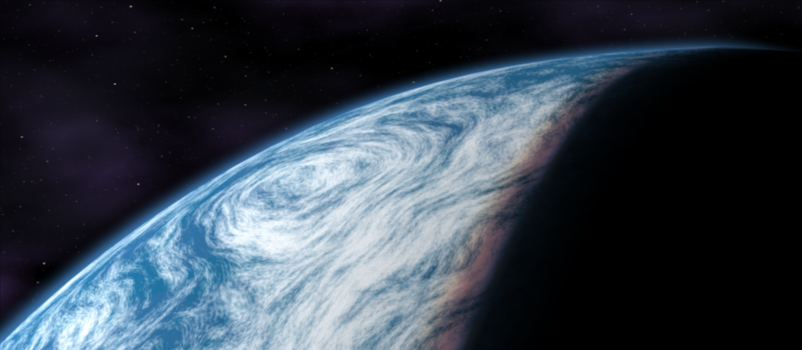
a Color Gradient tints the sunset edge
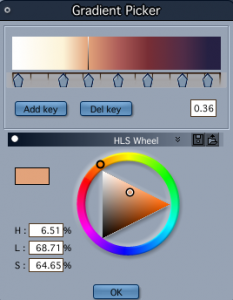 A touted “feature” of some photoreal 3D images is the effect where the sunset edge tints the clouds with color. Cloud color shifts from white, to yellow, to orange, to deep red as blue light is increasingly scattered by the atmosphere.
A touted “feature” of some photoreal 3D images is the effect where the sunset edge tints the clouds with color. Cloud color shifts from white, to yellow, to orange, to deep red as blue light is increasingly scattered by the atmosphere.
The effect is easy to achieve: change the Environment Shader (from #8 above) to Color Gradient and the Orientation shader’s blendind zone is now defined with a custom gradient. You may need to copy the gradient into your shader’s Color Channel, Glow Channel, or both. I exaggerated the width of the effect in the image above. I suggest you look for images of Earth taken by Apollo astronauts on the moon. The effect is visible, but subtle.
#10 – Links to planet tutorials and resources
I’ll be adding to these links as I find them!
Planet Tutorials:
Kixim’s Planet tutorial for Carrara – http://www.renderosity.com/mod/tutorial/index.php?tutorial_id=2024
How to Make a Fake Planet video tutorial by Cripeman https://carraracafe.com/how-to-make-a-fake-planet/
Scene Files:
3dage’s Bulb Light Sphere Effect as atmosphere https://dl.dropbox.com/u/7907045/planet_fly_in.car
Fractaldimensia’s Earth model – http://www.daz3d.com/forums/viewthread/28699/
Carrara and Photoshop plugins:
Primivol at inagoni.com – http://www.inagoni.com/e107_plugins/content/content.php?content.4
Enhance:C at Digital Carver’s Guild – http://www.digitalcarversguild.com/plugin.php?ProductId=18
LunarCell at Flaming Pear – http://www.flamingpear.com/lunarcell.html
Shader Ops at Digital Carver’s Guild – http://www.digitalcarversguild.com/plugin.php?ProductId=11
Shoestring Shaders – http://www.des-web.net/html/shoestring_shaders.html
High Resolution Earth Maps:
Blue Marble maps at NASA’s Visible Earth – http://visibleearth.nasa.gov/view_cat.php?categoryID=1484
JHT’s Planetary Pixel Emporium – http://planetpixelemporium.com/earth.html
Happy Rendering!
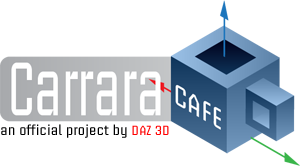

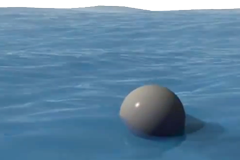
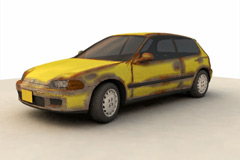
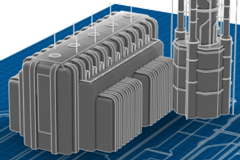
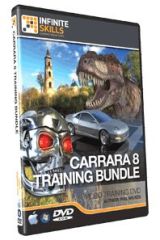
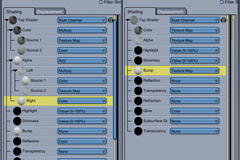
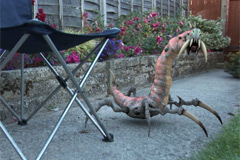
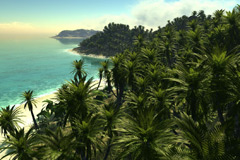
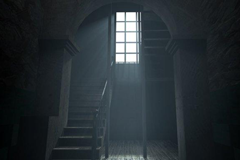
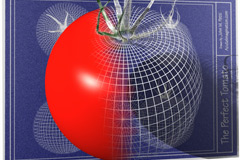
Nice work, Holly! It must have taken quite a while to put all this together.
Excellent work, Holly. You took this much further than I have, so I’ll be using these tips! I tried a few planet generators, and not too pleased with any of them. I’ll have to try the one you referenced now, so thank you for putting all this together.
FD
Great info, thanks for putting this together. Posting this in a pdf will earn you extra stars (and planets).
thanks Holly, really informative and well structured – you rip 🙂
Excellent Holly
Thank you
8068
Thank you Holly!